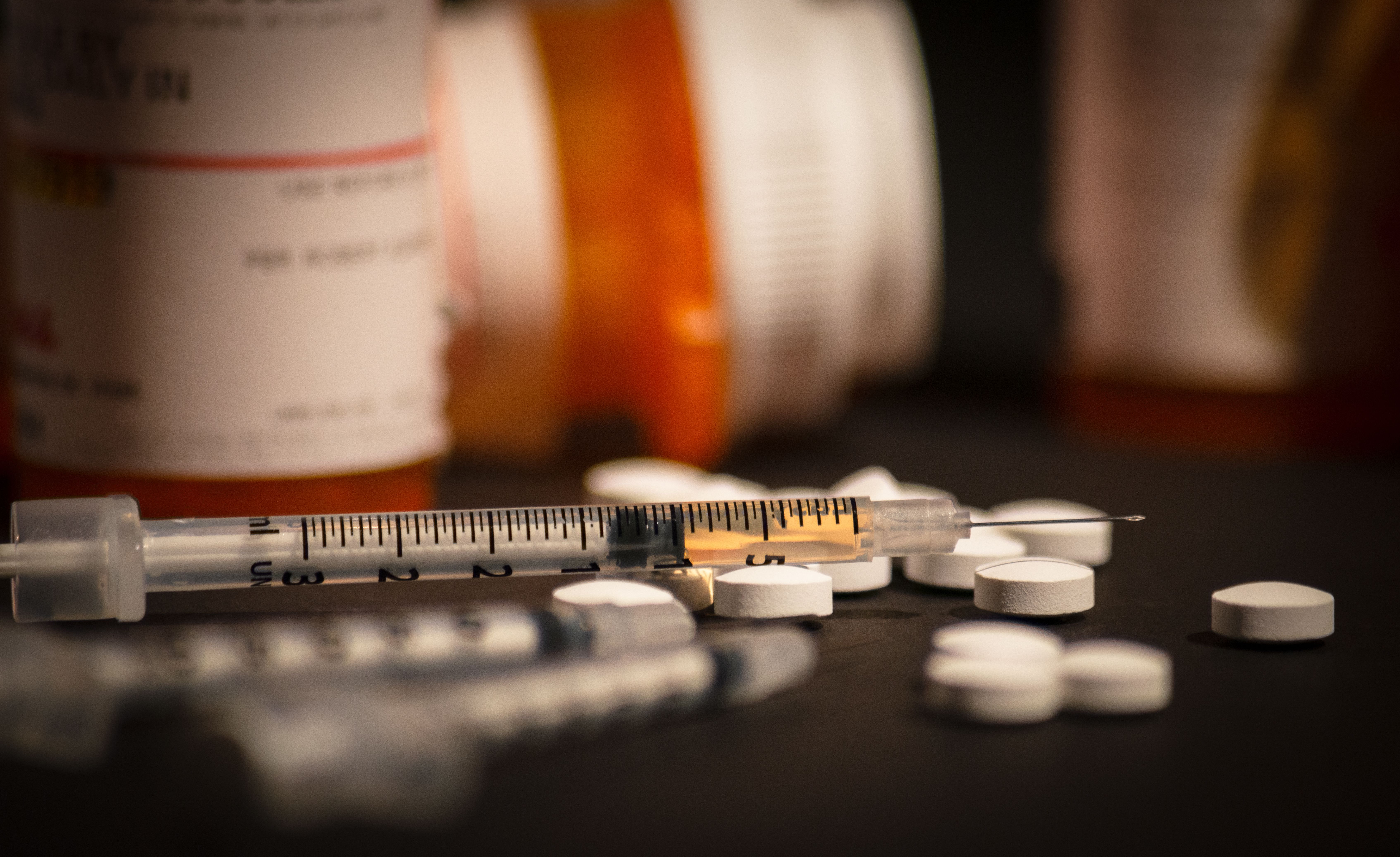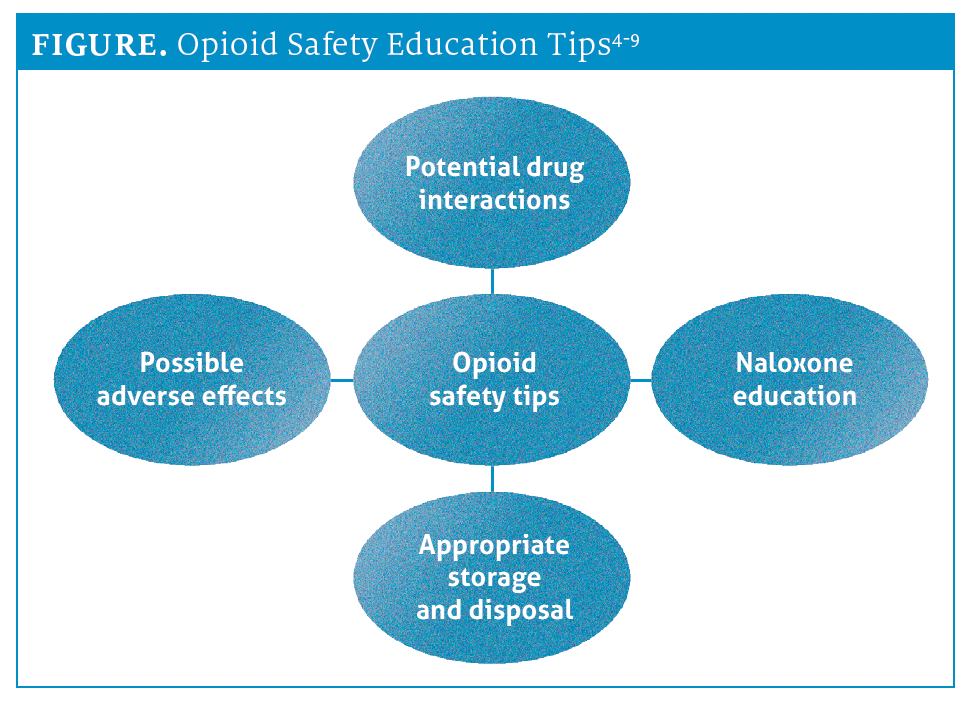Publication
Article
Pharmacy Times
Opioid Safety Is a Vital Part of Medication Therapy Management
Author(s):
Pharmacists can provide important safety education to patients and health care professionals.
It can be challenging to find the delicate balance between effective pain management and preventing prescription drug abuse. Through medication therapy management (MTM), pharmacists can play an important role in providing opioid safety education to both patients and health care professionals.
Loaded Syringe and Pills | Image credit: Darwin Brandis - stock.adobe.com

According to the CDC, approximately 110,000 individuals died from drug overdoses in the United States in 2022.1 The synthetic opioid fentanyl is a major culprit involved in the rise of drug overdoses, although other opioids are certainly involved and pose their own risks.2
OPIOID SAFETY AND MTM
Communication through MTM consults is key when it comes to opioid safety. Asking patients open-ended questions, using active listening, and providing written and verbal communication are a few important tips for communicating.3 During MTM consults, it is also critical for pharmacists to identify potential signs that a patient is experiencing opioid use disorder, defined as substance use disorder with abuse that results in significant impairment or distress.3
These signs can include forged prescriptions, prescriptions from outside the immediate geographic area, cash payments, early refills, and multiple prescribers.3
The recently updated CDC Clinical Practice Guideline for Prescribing Opioids for Pain emphasizes the pharmacist’s role as part of the multidisciplinary team. Pharmacists should check the prescription drug monitoring program before dispensing opioids to patients. They should also assess for any possible drug interactions with opioids (eg, benzodiazepines) and weigh the risks vs benefits on a case-by-case basis (Figure4-9).4

Additionally, pharmacists should be involved in the opioid-tapering process. Evidence demonstrates that nonopioid medications are as effective as opioids for many types of acute pain (eg, lower back pain, neck pain, and musculoskeletal injuries). If opioids are needed for pain management, then immediaterelease instead of extended-release and long-acting formulations should be used. Extended-release and long-acting formulations should be reserved for severe, continuous pain.4
It is critical for patients to have naloxone nasal spray on hand as a lifesaving medication to reverse an opioid overdose. The FDA approved naloxone hydrochloride nasal spray (Narcan) for OTC use on March 29, 2023, to expand access,5 and approved another spray (ReVive) for OTC use on July 28, 2023.6 Additionally, nalmefene nasal spray (Opvee) is a prescription opioid overdose reversal agent approved by the FDA on May 22, 2023.7 Pharmacists can play a vital role in educating patients and health care professionals about these critical medications.
Appropriate disposal and storage of opioid medications are essential to prevent accidental ingestion and overdose. Pharmacists should educate patients receiving opioids about storing them in a locked cabinet, out of reach of children. Unused, unwanted, or expired opioids can be disposed of at take-back programs, such as the US Drug Enforcement Administration’s National Prescription Drug Take Back Day.8 At the last program, held in April 2023, 663,725 pounds of medications were safely disposed of at almost 5000 collection sites across the United States.8
Pharmacists can also assist patients with locating a nearby permanent disposal site, many of which are located at pharmacies.9 If patients are unable to dispose of opioids at a take-back location, they should consult the FDA’s flush list.10 If the opioid is on this list, patients can safely flush it down the toilet. Fentanyl and oxycodone are a couple examples of opioids that can be flushed.9 If the patient’s medication isn’t on the flush list, then it can be mixed with something undesirable, such as cat litter, dirt, or used coffee grounds, and disposed of in the household trash.9
About the Author
Jennifer Gershman, PharmD, CPH, PACS, is a drug information pharmacist and Pharmacy Times contributor who resides in South Florida.
References
- About the National Vital Statistics System. CDC. Updated January 4, 2016. Accessed June 2, 2023. https://www.cdc.gov/nchs/nvss/about_nvss.htm
- Drug overdose death rates. National Institute on Drug Abuse. June 30, 2023. Accessed July 11, 2023. https://nida.nih.gov/research-topics/trends-statistics/overdose-death-rates#:~:text=Overall%2C%20drug%20overdose%20deaths%20rose,overdose%20deaths%20reported%20in%202021
- Pharmacists: on the front lines. CDC Guideline for Prescribing Opioids for Chronic Pain. Accessed June 4, 2023. https://www.cdc.gov/drugoverdose/pdf/pharmacists_brochure-a.pdf
- Dowell D, Ragan KR, Jones CM, Baldwin GT, Chou R. CDC Clinical Practice Guideline for Prescribing Opioids for Pain - United States, 2022. MMWR Recomm Rep. 2022;71(3):1-95. doi:10.15585/mmwr.rr7103a1
- FDA approves first over-the-counter naloxone nasal spray. News release. FDA. March 29, 2023. Accessed June 5, 2023. https://www.fda.gov/news-events/press-announcements/fda-approves-first-over-counter-naloxone-nasal-spray
- FDA Approves Second Over-the-Counter Naloxone Nasal Spray Product. News release. FDA. July 28, 2023. Accessed August 2, 2023. https://www.fda.gov/news-events/press-announcements/fda-approves-second-over-counter-naloxone-nasal-spray-product
- FDA approves prescription nasal spray to reverse opioid overdose. News release. FDA. May 22, 2023. Accessed June 5, 2023. https://www.fda.gov/news-events/press-announcements/fda-approves-prescription-nasal-spray-reverse-opioid-overdose
- Communities across the country remove nearly 664,000 pounds of unneeded prescription medications to prevent drug misuse. News release. United States Drug Enforcement Administration. May 15, 2023. Accessed June 5, 2023. https://www.dea.gov/press-releases/2023/05/15/communities-across-country-remove-nearly-664000-pounds-unneeded
- Controlled substance public disposal locations – search utility. US Department of Justice/Drug Enforcement Administration Diversion Control Division. Accessed June 5, 2023. https://apps.deadiversion.usdoj.gov/pubdispsearch/spring/main;jsessionid=CXXsPkItzKlzWdpUb5DBKXX5ACqeBc-pYUgtopJs.web1?execution=e1s1
- Drug disposal: FDA’s flush list for certain medicines. FDA. Updated October 1, 2020. Accessed June 5, 2023. https://www.fda.gov/drugs/disposal-unused-medicines-what-you-should-know/drug-disposal-fdas-flush-list-certain-medicines#FlushList
- About us. University of Illinois Chicago. Accessed June 2, 2023. https://academicdetail.pharmacy.uic.edu/about-us/

Newsletter
Stay informed on drug updates, treatment guidelines, and pharmacy practice trends—subscribe to Pharmacy Times for weekly clinical insights.





